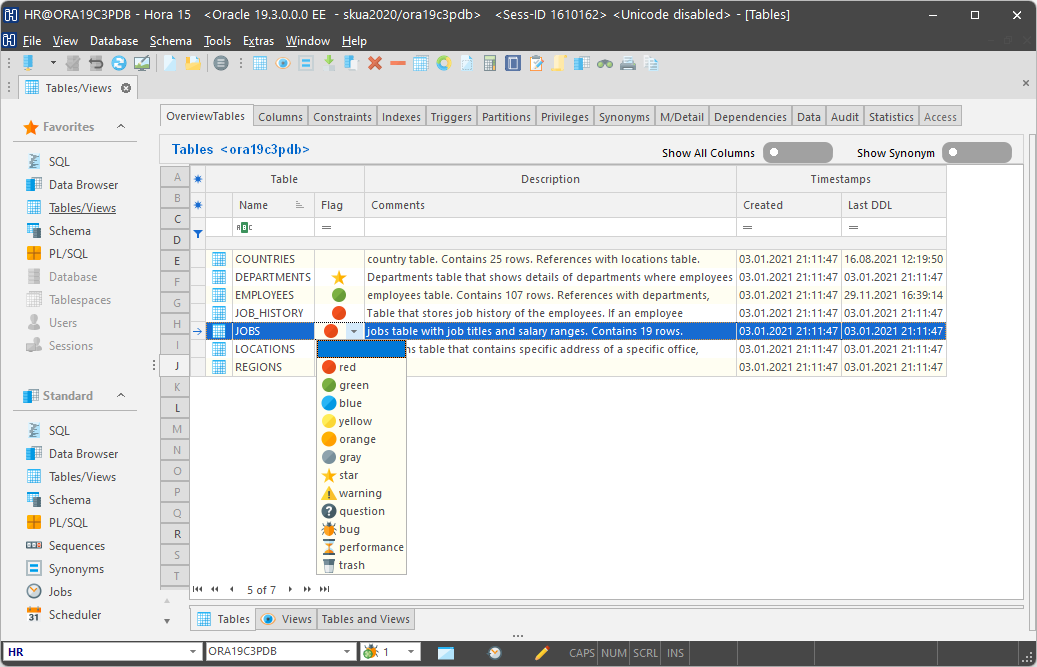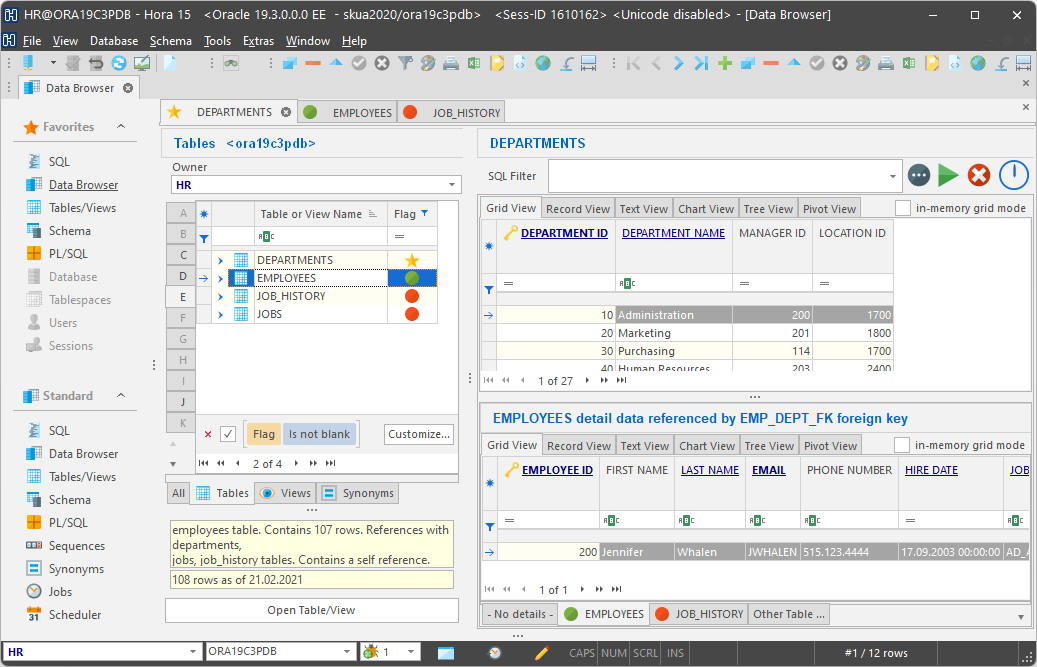KeepTool 15 Tools for Oracle databases has been released for more than a month now. In this blog article we will introduce one of various new features and you should not underestimate it. We will show you how you can flag your personal subset of database objects by assigning an appropriate icon. This can be a favorite star, a colored bullet or a warning sign to name only a few.
This powerful new feature helps you to keep organized. Let’s consider a large database that contains thousands or even tens of thousands of tables, views and PL/SQL packages. We help you to stay focused on the set of database objects you are currently working on. Don’t get lost in the jungle of database objects anymore!
You will find a new column “flag” on the following overview data grids:
as well as database objects listed on the

Using the combo box next to the database object name, you can assign an appropriate symbol from the dropdown list. This allows you, for example, to tag a database object using a colored bullet. You can also select a more intrinsic symbol such as a favorite star, a question tag, a warning sign or a trashcan symbol. There are also symbols to mark objects as blemished or performance critical. We will dig deeper into a sample use case later in this article.
Once a database object has been flagged anywhere in our products, it is highlighted on each other place that supports object flagging as well. For example, a table that has been flagged on the overview grid using a ‘favorite star’ symbol will be highlighted using the same symbol on the data content browser, SQL query builder, DB object browser on the SQL page as well as in the ER diagrammer table selector. Never it has been easier to keep database objects of interest in focus.

You can use filter technologies built in our data grids to find flagged objects. In an instant you can shrink the number of objects displayed in the data grid to a manageable number of records.
All flags are stored locally on your computer in JSON files below the folder
%APPDATA%\KeepTool15\ObjFlags\<database>#<user>\
where both <database> and <user> are replaced by the values from your current database connection.
Explore possibilities of KeepTool.

Let’s consider a change request that comprises structural changes to a couple of tables as well as some changes to PL/SQL logic. First of all, we start with flagging all database objects that are subject to change using a red bullet.
While modifying database objects one by one, we successively change the flag from red to a green bullet for each completed change.
While performing the change, you can always see at a single glance
There may be mutual dependencies between some database objects that require repetitive changes to more than one object. That prevent you from processing objects one by one. To indicate changes to a database object are currently in progress, we flag the appropriate database object using a yellow bullet.

Finally, when all flags are green the change can be considered as completed.
Flagging database objects is a great way to keep organized when working with large database schemas. Even in smaller environments, it may help you to stay focused on your subject of work.
Using our technology of flagging database objects before performing a batch of changes may significantly boost your development performance.
